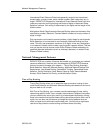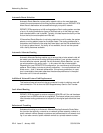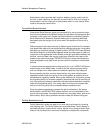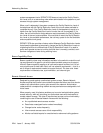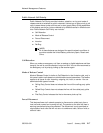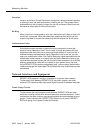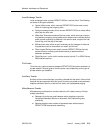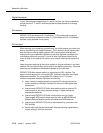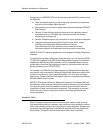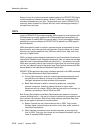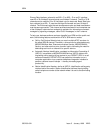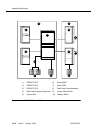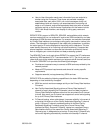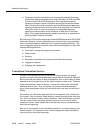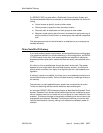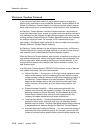
Network Interfaces and Equipment
Issue 5 January 1998
12-11555-230-024
Configuring your DEFINITY ECS with an alternate voice/data DS1 interface does
the following:
■ Uses out-of-band signaling in which signaling information is multiplexed
onto one of the 64-kbps digital channels
■ Permits end-to-end voice and digital data connections between DEFINITY
ECS switches
■ Delivers 23 clear 64-kbps digital channels plus one signaling channel
multiplexed onto a 1.544-Mbps DS1 line with provisions for framing,
maintenance, and signaling
■ Delivers 8-kbps timing and slip information for synchronization subsystem
■ Supports ground-start and loop-start switch-central office, foreign
exchange, and Wide Area Telecommunications Service
(inbound/outbound) trunks, as well as direct inward dial trunks,
off-premise stations, and dedicated voice/data switch connections
DEFINITY ECS DS1 interface capabilities include support for Digital Multiplexed
Interface.
To achieve even greater benefits than those just listed, you can combine DEFIN-
ITY ECS DS1 interfaces and ISDN-Primary Rate Interface to give you additional
capabilities. ISDN-Primary Rate Interface is a DS1-compatible direct-connect
access service that links the intelligence inherent in the network with the intelli-
gence provided by your DEFINITY ECS.
For example, with ISDN-Primary Rate Interface, the Software Defined Data Net-
work service may be accessed. Software Defined Data Network provides virtual
private-line connectivity, via the switched network, for voice, data, and video
applications. Software Defined Data Network services complement the Software
Defined Network voice services.
DEFINITY ECS delivers Automatic Restoration capability with Software Defined
Data Network, which restores disrupted connections between access endpoints
(non-signaling trunk) and data endpoints (devices that connect the switch to
computers and data communications equipment). This restoration is achieved
within seconds of a service disruption so that critical data applications can
remain operational.
Stratum 3 Clock
Many companies have solved their communications network needs by using
high-speed digital facilities. However, many have found that standard synchroni-
zation timing systems are not accurate enough in these situations. Standard sys-
tems allow more slippage than is desirable for operations like high-speed bulk
data transfer. The result is bit and frame losses which lead to lost data.



